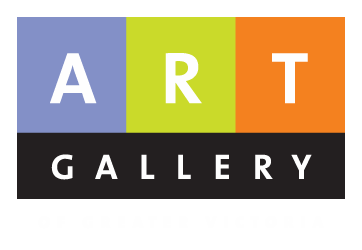Heather Cragg
Canadian/British, 1953 - 1980
For an artist whose serious production spanned only ten years Heather Cragg has left behind a large book. The typography is dense, references are myriad and complex, the language esoteric, the imagery though literal is often veiled and obscure. Yet throughout it is illuminated with a brilliant realism that provides structure and cohesion, pattern and beauty. Heather Cragg's art leads the viewer into another world, a world grounded in acute sensory powers but soaring to great heights of poetic imagination.
The unusual vision of Heather Cragg first made its public appearance in a mimeographed booklet published during her last year at Oak Bay High School in 1971. Duet for Ivory Hands combined the poetic fantasies of Martin Cava with Heather Cragg's fantastic drawings. Already one could observe her interest in an unusual visual vocabulary culled from truncated human parts, mythological beasts and familiar objects drawn together with occasional allusions to 19th century illustrators such as Arthur Rackman. In these works, however, line is hesitant, forms bold rather than competent, and the images themselves precocious but juvenile.
The following years were devoted to a highly disciplined development of skills, in particular drawing. These were the years of study, first under printmaker Pat Martin Bates, then at the Vancouver School of Art and, in 1975, at the Ruskin School of Drawing, University of Oxford. During this period the sketch books and prints document a gradual but vigorous mastery of realism. These are studies in surface: shade and shadow, form and composition, utilizing with confidence the zinc etching technique.
At Oxford, the traditional academic curriculum required an entirely new approach to drawing, a movement from the seen to the known, from observation to practice. During this period, Heather Cragg developed a greater interest in the theory of art.
After graduating from Oxford in 1976, Heather began a much more serious examination of the nature of art, her role as an artist, and the direction of her talent. One indication of this was the dramatic intervention of a new concept of colour. A series of works, beginning perhaps with the watercolour studies for Violin Interior a la Cecilia, a commissioned oil completed in London, demonstrate a new freedom and warmth in the use of colour. Even earlier, in 1976, her sketchbooks show experiments in which she had translated earlier pencil studies into watercolour.
By 1979, with a much freer brush, an almost vibrant pallet, and such techniques as dampened paper or combining guache and conte, Heather Cragg was on the point of a major transition in her work. For many of these later paintings there seems to be no preliminary studies, no underdrawing, and only the faintest hint of the disciplined draughtsmanship which had become her hallmark. Unfortunately, only in a few of her last landscape assemblages did the possibility of this major revision in her work begin to hint at some kind of ultimate expression.
The imagery of Heather Cragg's work has baffled her audience. While the literalism of her style and technical mastery of various media allowed her to achieve considerable note as a portraitist, and in particular as an animal painter, her allegorical painting and etchings on which she expended so much effort have been less recognized. She continuously faced an audience fascinated by her consumate skill while at the same time unappreciative of its intellectual motivation.
Among the last sketchbook notes of 1979 are indications Heather Cragg was re-examining the work of Vincent Van Gogh with particular interest in his self-appointed mission as a mystic and teacher. This parallels the abrupt shift in medium, style and subject matter previously mentioned. Without a doubt her art was poised for a dramatic change in focus and direction. The small landscape watercolour studies were the first halting steps in this process and remain an inviting, if unresolved, summation of her complex artistic personality. Indeed Heather Cragg was a highly talented artist who achieved more and travelled further in her brief career than many others have done in a much longer lifetime. This remains the ultimate fascination of her art.
Person TypeIndividual
Canadian, 1891 - 1948
Canadian; First Nations (Coast Salish), born 1983













